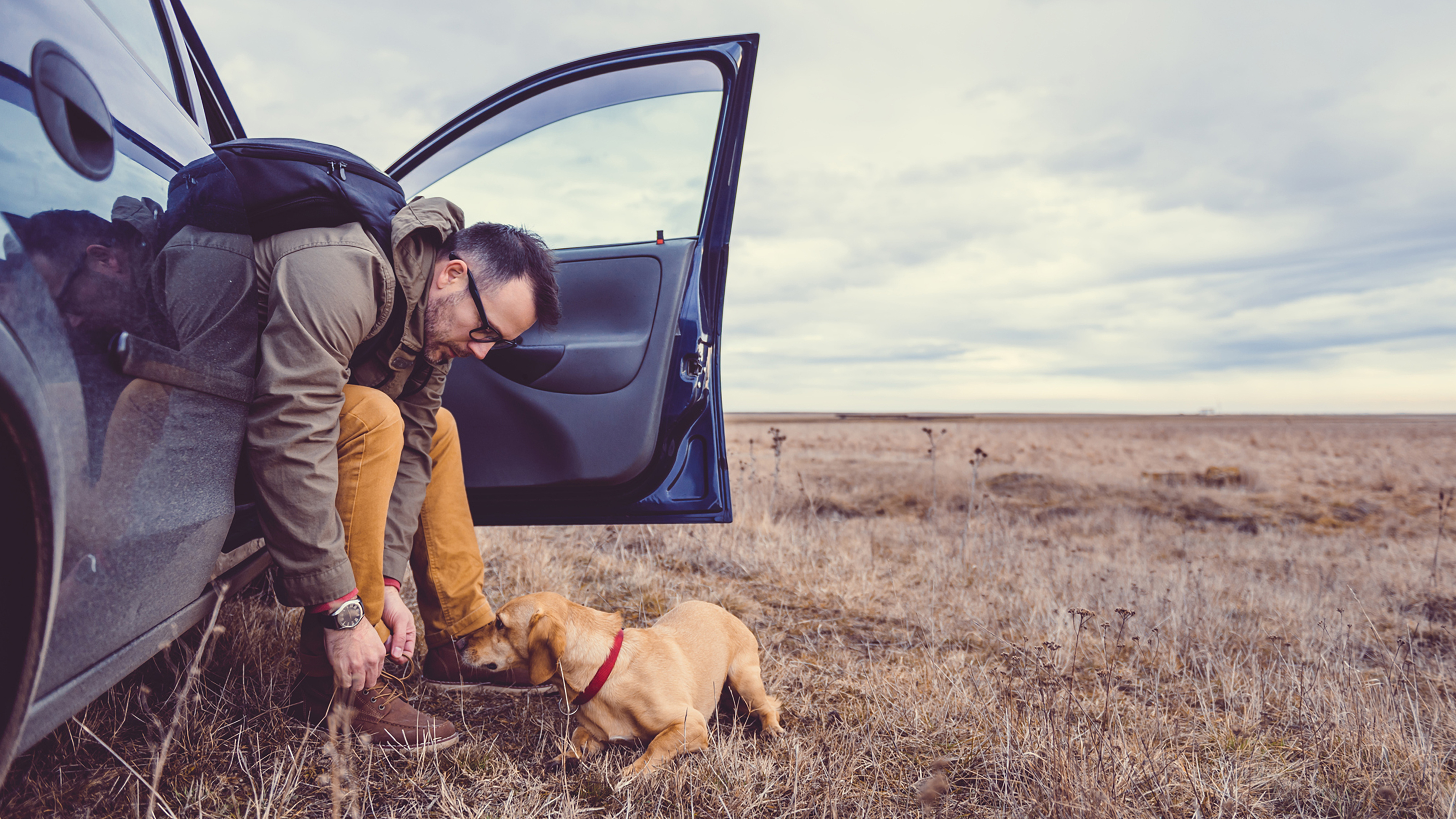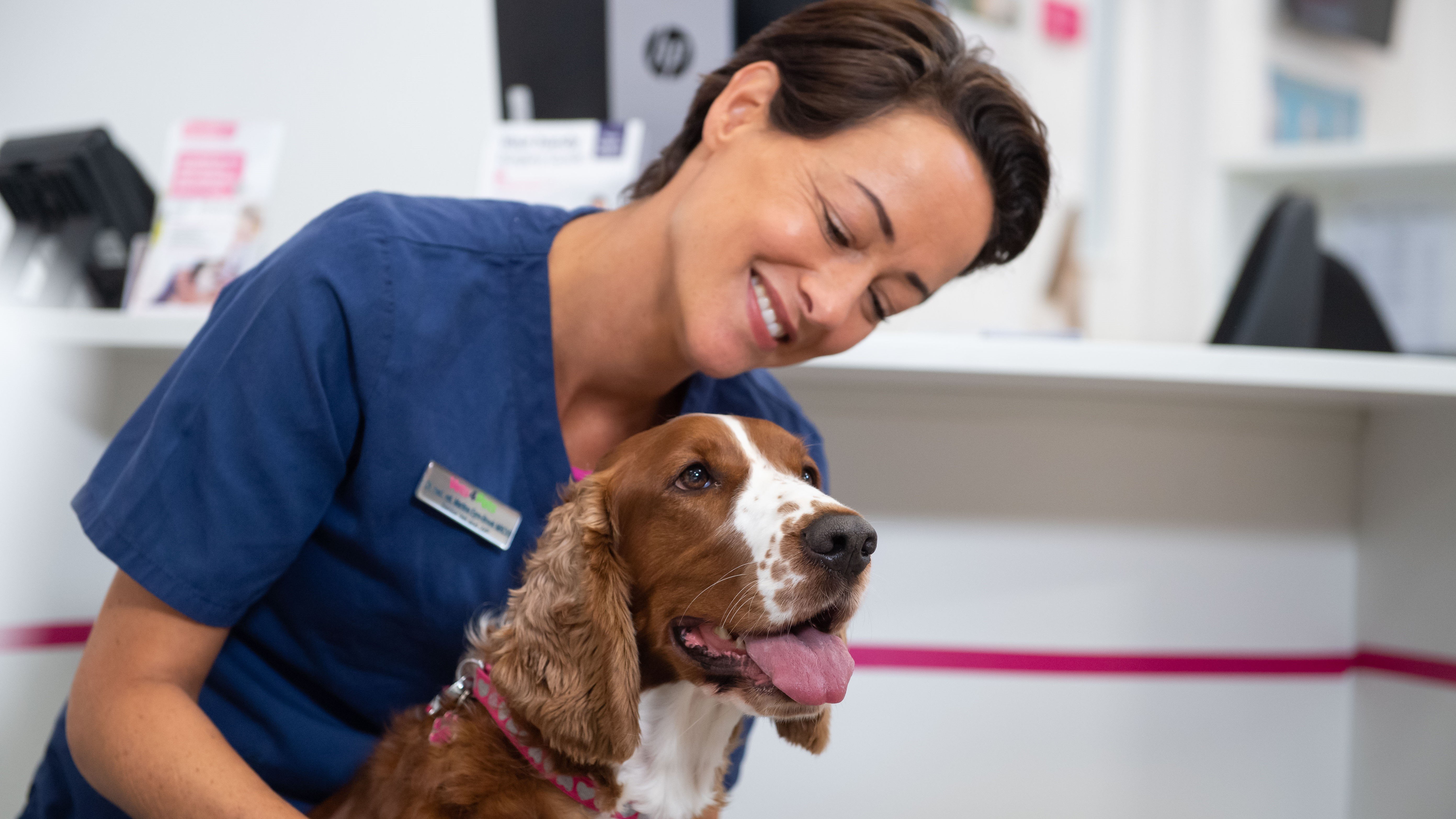
Car Travel With Your Dog
Does your dog travel in the car with you? Read our top tips on keeping your dog safe whilst travelling.
Many of us take our dogs in the car on a regular basis and most of us expect them to travel happily whenever we do. How do you help a dog to get used to travelling, and how do you keep them safe in the car? If you want to take your dog much further afield and embark on international travel, what preparations do you need to make? Read on to find out.
It’s important that, when you take your dog in the car, they are safe and secure. Just like
people, they can get badly hurt if the car suddenly brakes and they aren’t restrained. Loose pets in a moving vehicle can cause a distraction or even an accident, and it’s also against the law to travel like this. When you take your dog in the car, they should be safely restrained, either inside a crate, behind a dog guard or by wearing a harness that attaches to a seat belt.
More about travelling in the car with your dog
If you’re going to use a crate, ensure it’s large enough for your dog to stand up, lie down and turn around inside. If it will fit on a seat, you could place it on the back seat and you may be able to trap it behind the front seat or fasten the seat belt around it. Alternatively, place it in the luggage area, behind the back seat.
Never travel with pets in a covered or sealed boot area and if they are going to travel in the luggage area, be careful not to cover the crate with belongings that might reduce ventilation. Some car designs allow the sun to shine in through the rear screen and heat what’s in the luggage area, so ensure that your dog isn’t exposed to sunlight like this. Heat stroke can be a problem in pets who are inside vehicles that are stuck in queues of traffic during warm weather.
Place comfortable bedding inside the crate for your dog to settle on. You might want to place an old towel on top of the bedding so that you can remove and replace the towel, if it becomes soiled. Water bowls that attach to the inside of crates are a great way to allow your dog free access to water while travelling. You can also place toys inside to keep your dog entertained, but it’s best not to leave food or treats in there in case your dog should choke or be sick while you’re driving.
Before you travel with your dog inside a crate, make sure they’re already happy using a crate in the home. You could even use the same crate in the car that you use at home, if you’ve already crate-trained your dog when they were younger.
Make sure your dog has developed good associations with their crate. At home, make it a safe, comfortable place to which they can retire for some peace and quiet, and never use the crate as a punishment. When you need to shut them inside at home, leave them an edible reward and an interesting toy to play with.
Start with short periods with the door shut, before letting your puppy out again. It’s a good idea to teach your puppy to remain inside the crate until you release them with your voice, so that they don’t burst out before you’ve got their lead safely on, when travelling.
You can do this by calmly closing the door every time your puppy starts to come out of it without being verbally released. Initially, practice this with your puppy’s lead already attached so that you can establish the waiting part of this exercise, without complicating things by having to fiddle around attaching leads.
Your dog will learn very quickly that they must wait until you release them. The release is its own reward, so you won’t need to offer additional rewards for waiting to be let out.
If your dog isn’t happy in a crate or behind a dog guard, you may like to try using a harness that has an attachment for the seat belt. Always travel with your dog on the back seat if they’re wearing a car harness. It’s not safe to travel with a dog on the front passenger seat, as they can be seriously injured if you have to brake suddenly, or if an airbag should go off. In the front seat, pets can also distract the driver and cause an accident.
Make sure your dog is restrained properly. We have to wear a seatbelt, and for good reason. Crashes can cause devastating injuries, and loose dogs can injure both themselves and anyone in the car with them.
Stopping every few hours for a leg stretch, water and a toilet break is really important to keep everyone in the car comfortable. Keep an eye on your dog as you travel. Dogs can suffer from car sickness, so watching for any signs of discomfort and being able to take an extra break if your dog needs to is really important.
On a long journey, you may need to stop for a break. Remember that vehicles heat up very quickly, even when the outside temperature feels relatively cool. Never leave pets of any kind in a car with the windows up. Ideally, park in the shade and take turns with other passengers to leave the vehicle, so that someone can remain with it and the doors or windows can be kept open.
If you’re travelling alone, take food and drink with you so that you don’t have to leave the vehicle other than for a very quick toilet break – and leave the windows open to keep some air flowing through when you do. If you’d like to get your dog out of the car for a toilet break and a leg stretch too, ensure that they’re wearing a well-fitted harness or collar in the car and clip the lead to this, rather than struggling to get a harness onto a wriggling young dog with the car door open in a busy motorway service car park.
As an added security, when you’re walking your dog around somewhere unfamiliar, you could also pop a slip lead over their head and use it as an extra lead. That way, if they get excited or frightened and manage to back out of their harness, you still have a secure hold of them.
If your journey is going to take you away from home overnight, remember to pack supplies of your dog’s food, along with bedding, toys and treats. Changing your dog’s diet suddenly can lead to a tummy upset, so it’s better to take a supply along with you.
Expert top tip
We asked Tammy Miles, Senior Registered Veterinary Nurse at Vets4Pets Leeds Birstall, for her top tip when travelling in the car with your dog:
 "Start off small and work your way up! Allow your puppy to become used to the car first and make it positive with some happy praise. And using calming sprays in the car beforehand can sometimes help."
"Start off small and work your way up! Allow your puppy to become used to the car first and make it positive with some happy praise. And using calming sprays in the car beforehand can sometimes help."
"Once your pup is feeling positive in the car, start with small journeys and praise the good behaviour before extending the journey time. If your puppy becomes anxious or unsure again, then reduce the journey time and try again."
Health Plans to keep your dog healthy
At Vets4Pets we offer a range of Health Plans that make essential routine treatments more affordable. You'll save money on things like annual vaccinations, flea and worm treatment and routine health check-ups.

Dog Advice
Read more of our expert dog advice to keep your dog happy and healthy.
